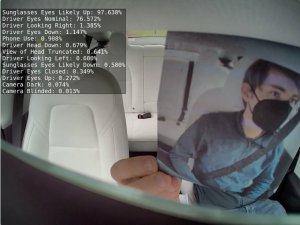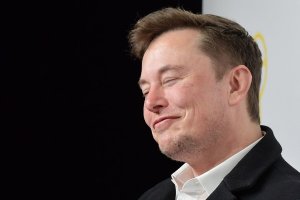Why You May Still be on Tesla Update 2024.8.9 or 2024.3.25 and What to Expect

Tesla’s latest set of updates has been fast-moving, with lots of bug fixes, and this fits with Musk’s philosophy of moving fast and breaking things. Some people are still on 2024.8.9, some are still on 2024.3.25, and some people are already on the 2024.14.8 Spring Update, and there’s also the brand-new 2024.20 update that just went out to employees for testing.
Let’s take a look at how Tesla’s software distribution system works, and why you are where you are.
Statistics
Before diving deep into how it all works, let’s get some statistics out of the way. We’ll be using the statistics we use here on the site, which are powered by TeslaFi.

As we can see, the tracked fleet is about 30% 2024.14 – the spring update; 2024.8 – Tesla’s previous major update, which contains FSD V11; and 2024.3 – the FSD V12.3 update. The remaining fleet on 2023.44 or other updates is fairly negligible, at around 10%.
So, about 65% of the tracked fleet has access to FSD V12, depending on their country of origin. The remaining 25% of the fleet only has access to FSD V11 if they’re in an eligible region.
FSD Update Track
When someone subscribes or purchases FSD in the U.S. or Canada, Tesla enables the FSD feature on that vehicle’s firmware, which currently could be either FSD v11 or FSD v12.
Once you’ve subscribed to FSD, you’re generally put on the ‘FSD Track,’ which means you’ll start receiving the latest FSD updates, like FSD v12.4. These updates are usually exclusive to FSD subscribers as they serve as a testing ground for the latest FSD revision. They’ve been update versions such as 2024.9.5, 2024.3.25, 2023.27.5 and so on. In the past year or so, they’ve all been odd week numbers, but that hasn’t always been the case.
However, the downside is that Tesla develops FSD at a different pace, and while you’re one of the earlier individuals to test out the latest FSD version, these updates are usually several major updates behind Tesla’s latest, meaning you don’t always have access to Tesla’s latest features. Currently, these are owners on update 2024.3.25 who are waiting on FSD v12.4, but still don’t have the Tesla features in update 2024.8 or 2024.14.
Vehicle Eligibility
Not all vehicles are eligible for all updates, and this is a twofold reason. First, if you’re on an update that is on a newer branch, say 2024.8.9, you cannot go down to 2024.3.5. The version number is broken down to year, week number and revision. So update 2024.8.9 is the 9th revision of the update that was created on the 8th week of 2024.
In general, Tesla does not roll back versions, so if someone is already on update 2024.14, then their vehicle wouldn’t be eligible for FSD 12.4, which is update 2024.9.5. This is mainly due to potential issues since Tesla doesn’t thoroughly test rolling back software.
Your vehicle will always be eligible for updates on a later branch, even if you won’t necessarily receive that update – like the many owners on update 2024.8 or 2024.3 who haven’t received update 2024.14 yet.
The second factor is hardware. Vehicles on older hardware variants, or vehicles that are considered to be legacy, are just not eligible for some updates. This is something that Tesla decides as newer hardware is needed for newer features and support for legacy hardware may not be included in all updates.
If you’ve subscribed to FSD and you’re on update 2024.8.9 and wondering why you’re not receiving update 2024.14, that’s why. Tesla wants your vehicle to be eligible for the next FSD v12.4 update, which will be update 2024.9.5.
Vehicle Variants
Sometimes, updates are not sent out widely for the simple reason of hardware variants. Tesla’s fleet has become widely fractured over the years, with many different variants of vehicles on the road today. Some 2022 Model Y’s may have Matrix headlights, while some may not, and some may have USS, while others don’t. Most have HW3, but a few have HW4!
That’s 6 possible branching variants in one year – a total of 24 possible variants for just the 2022 Model Y, not including the Performance, Long-Range, Rear-Wheel Drive, 4680-cell Rear-Wheel Drive, and the odd 2022 Standard-Range Dual-Motor variants that are also all different! If you did the math, there are 362 thousand possible variants, but not likely more than ~40 or so actual builds that Tesla differentiates between for software for all vehicles.
Of course, Tesla has managed to pare down these variants through the 2023 and 2024 model years, with greatly simplified production chains, with the removal of USS in favor of Tesla Vision, the full move to Hardware 4 across all factories, and Matrix headlights becoming standard globally. But all those existing vehicles are not legacy, and still need updates.
That means a complex and well-thought-out update process has to be built in order to deploy a functional update to all these vehicle variants.
Bug Fixing
Besides the complexity of vehicle variants, Tesla also has to catch and fix bugs. No matter how good one is at software development, sometimes bugs just escape into the wild. And fixing those bugs is essential since they could leave a vehicle undriveable. Although a major issue is rare, Tesla has had some issues in the past, such as Automatic Emergency Braking being disabled due to a software issue. This is why Tesla rolls out updates gradually.
We’ve seen this play out with update 2024.14, which has received numerous bug-fix releases. Tesla will release an update to a set of cars, discover an issue, and stop the rollout. A few days later, another update is out with additional fixes, and so on.
Conclusion
So, if you’re stuck on update 2024.8.9 or 2024.3.25, and are wondering when you’ll get FSD V12 or the Spring Update, you’ll have to hang on – the author is also on 2024.8.9 with V11!
Elon Musk mentioned on X that FSD V12.4 should be the update the reduces FSD branching and will bring everyone to FSD V12 in general. 2024.9.5 is the FSD V12.4 update, and it looks like vehicles that are below that branch number should be collectively receiving the reduced-nag V12.4 update.
When we finally receive FSD V12.4, we’ll likely need to hang on for a little longer until FSD V12.4.1 or FSD V12.5 rolls along to have the Spring Update.














![Tesla Launches 'TeslaVision' Contest With Big Prizes — See Last Year’s Winner [VIDEO]](https://www.notateslaapp.com/img/containers/article_images/2025/tesla-vision.webp/0458df1c6ed085c427608f0cf762de64/tesla-vision.jpg)
![Tesla Officially Unveils New Model S and Model X: All the Changes [Photos]](https://www.notateslaapp.com/img/containers/article_images/2025/refresh_s_x_1.jpg/31a01e933ae496b97965b27db360f11b/refresh_s_x_1.jpg)








![Driverless Tesla Robotaxi Spotted on Camera in Austin [VIDEO]](https://www.notateslaapp.com/img/containers/article_images/robotaxi/robotaxi-public.webp/5ffd9ed0c2c7f9dbfee05decb1c19a2f/robotaxi-public.jpg)
![New Model Y Performance Hits Nürburgring -- Our Best Look yet at the Upcoming Performance Model [VIDEO]](https://www.notateslaapp.com/img/containers/article_images/model-y-2025/model_y_performance_front.webp/a1fc68836e87fa694d414637ec5278b5/model_y_performance_front.jpg)

![Tesla Update 2025.20 Adds Multiple Camera Improvements [VIDEO]](https://www.notateslaapp.com/img/containers/article_images/tesla-screen/camera-toggle-wide.jpeg/cc9bd521da6a6d31af3812c1def70725/camera-toggle-wide.jpg)















